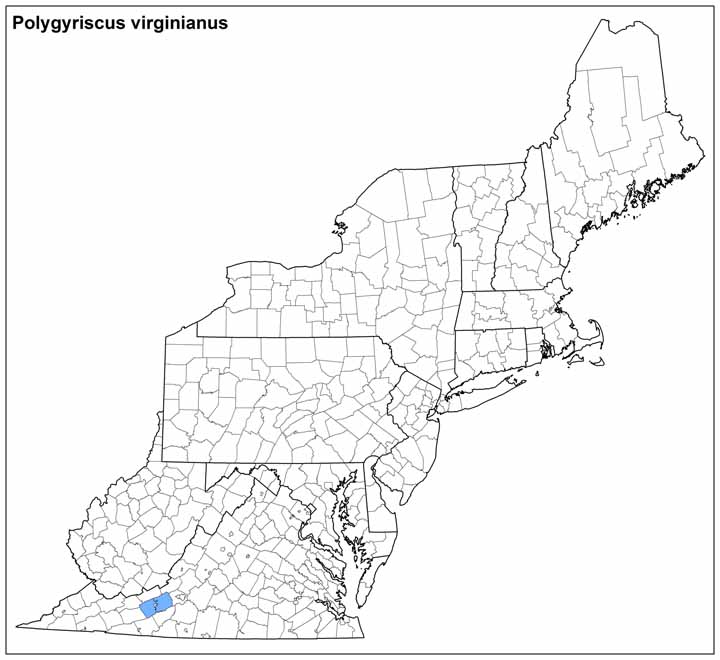Land Snails
.jpg)
.jpg)
Photo(s): Views of a Polygyriscis virginianus shell © Ken Hotopp.
Click photo(s) to enlarge.
Polygyriscus virginianus (Burch, 1947)
Family: Helicodiscidae
Common name: Virginia Fringed Mountain Snail
Identification
Width: 1.9 – 4.2 mm
Height: ≈1.3 mm
Whorls: 4+
The small shell of Polygyriscus virginianus is flattened top and bottom, with rather deep whorls. The apex does not rise above the body whorl, and the umbilicus is only slightly impressed. The final part of the body whorl narrows and is deflected downward, becoming detached from the previous whorl. The aperture is slightly thickened, and contains a recessed transverse lamella. A second lamella is present on the upper palatal surface, receding into the opening.
The shell is sculptured with a series of spiral “comb-like” deciduous fringes, typically lost from the lower surfaces but retaining 8-10 series above (Solem, 1975). The animal is pale, and presumably blind like others in its family.
Ecology
Shells of P. virginianus are found mainly on and near forested dolomitic bluffs along the New River in the vicinity of Radford, Virginia. They are typically excavated from 10-30 cm of stony scree mixed with leaves and wood at the foot of slopes, below outcrops, or at the bases of trees; or beneath larger stones and talus. However, the handful of live animals that have been recovered have ranged from within 1 cm of the surface to 45 cm (Batie, 1987; Pearce & Hotopp, 2011).
Taxonomy
A synonym for P. virginianus is Polygyra virginiana.
Distribution
This animal is reported only from Pulaski County, Virginia.
Conservation
NatureServe Global Rank: G1
NatureServe State Rank: S1
State Status: Endangered
Virginia wildlife action plan: Tier I
Federal Status: Endangered
Ken Hotopp 1/2013
Range Map (click to enlarge)


